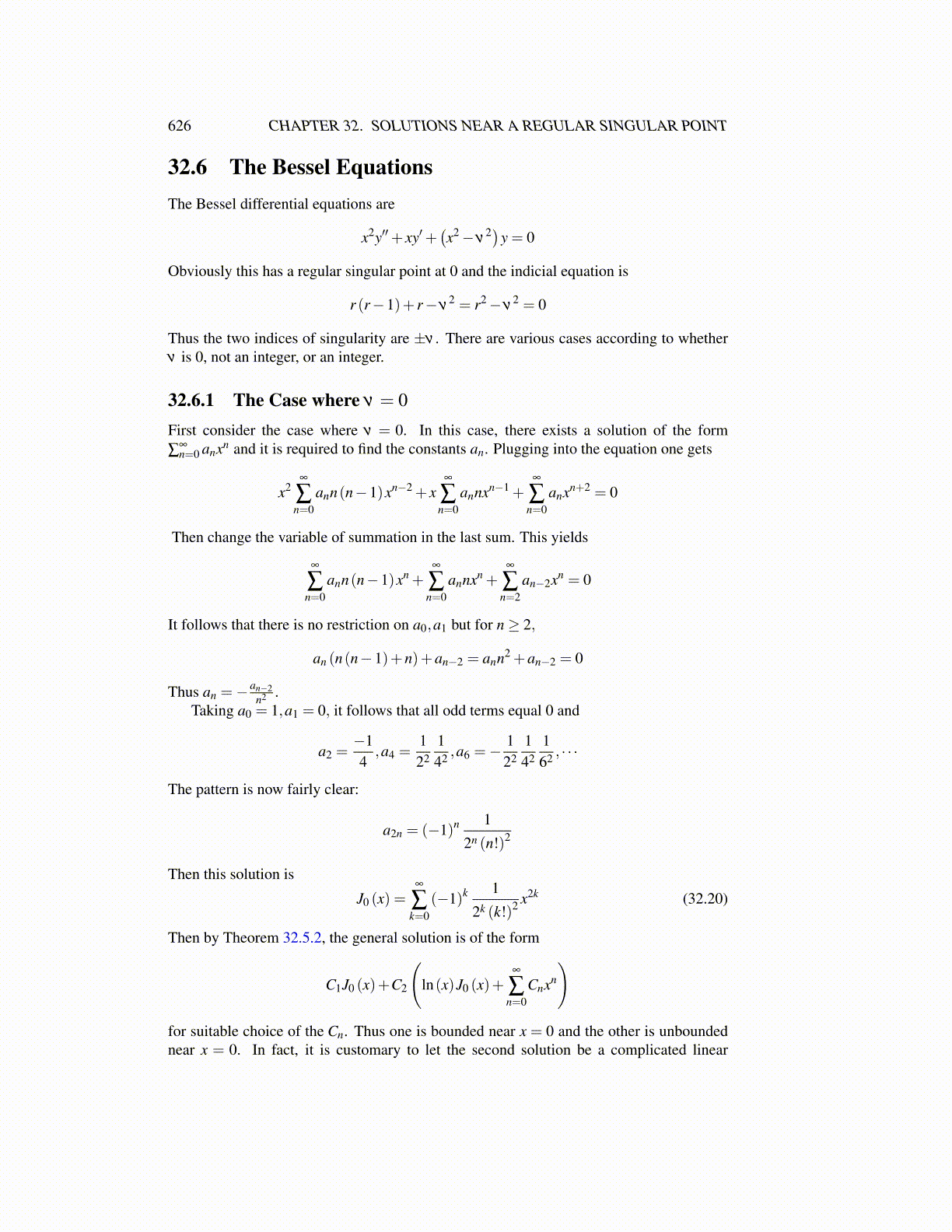
626 CHAPTER 32. SOLUTIONS NEAR A REGULAR SINGULAR POINT
32.6 The Bessel EquationsThe Bessel differential equations are
x2y′′+ xy′+(x2−ν
2)y = 0
Obviously this has a regular singular point at 0 and the indicial equation is
r (r−1)+ r−ν2 = r2−ν
2 = 0
Thus the two indices of singularity are ±ν . There are various cases according to whetherν is 0, not an integer, or an integer.
32.6.1 The Case where ν = 0
First consider the case where ν = 0. In this case, there exists a solution of the form∑
∞n=0 anxn and it is required to find the constants an. Plugging into the equation one gets
x2∞
∑n=0
ann(n−1)xn−2 + x∞
∑n=0
annxn−1 +∞
∑n=0
anxn+2 = 0
Then change the variable of summation in the last sum. This yields
∞
∑n=0
ann(n−1)xn +∞
∑n=0
annxn +∞
∑n=2
an−2xn = 0
It follows that there is no restriction on a0,a1 but for n≥ 2,
an (n(n−1)+n)+an−2 = ann2 +an−2 = 0
Thus an =− an−2n2 .
Taking a0 = 1,a1 = 0, it follows that all odd terms equal 0 and
a2 =−14
,a4 =122
142 ,a6 =−
122
142
162 , · · ·
The pattern is now fairly clear:
a2n = (−1)n 1
2n (n!)2
Then this solution is
J0 (x) =∞
∑k=0
(−1)k 1
2k (k!)2 x2k (32.20)
Then by Theorem 32.5.2, the general solution is of the form
C1J0 (x)+C2
(ln(x)J0 (x)+
∞
∑n=0
Cnxn
)
for suitable choice of the Cn. Thus one is bounded near x = 0 and the other is unboundednear x = 0. In fact, it is customary to let the second solution be a complicated linear